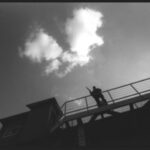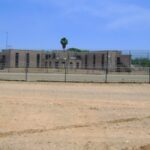In 1894 an abandoned plantation in Louisiana called Woodlawn was the home of tall grasses and snakes but soon was about to become the only Leprosy colony in America. This colony was soon to be known as Carville and it would be here that over the next several decades more than 5000 people would come first as almost prisoners to be locked away behind closed doors and later because this facility would be the first place to provide hope for a disease that has haunted mankind since biblical times.
The First Seven Inmates
When the first seven people five men and two women arrived at Carville, they must have been dismayed to see the run down antebellum plantation and slave quarters. Snakes inhabited the building and except for a doctor who visited once a week the patients were abandoned shut away from the rest of the world suffering from a disease that the entire world feared. Leprosy was thought to be an inherited disease and people were deathly afraid of catching this horrendous affiliation. As one medical professional would put it a full blown case of leprosy was the most horrible thing anyone could ever see.
To those who had it, they suffered not only the pain and disfigurement of the disease but, a life of being shunned and even hated. Lepers were segregated from society and had through out history been left to rot. So, it is no wonder that the first seven patients who arrived at Carville should feel the shame and fear of abandonment.
However, they had not counted on the compassion of the Sisters of Charity, who arrived and gave care, compassion and love to these patients and all those who were to come.
A Collaboration of Church and State
Through active urgings that the government do something to help Leprosy patients Carville became a Marine hospital and the Sisters of Charity remained on staff as paid nurses, researches and serving in many other capacities as well. Work began to treat the patients although at first treatment consisted mostly of making the old plantation and grounds habitable and clean and with giving basic care to the patients they had no idea how to treat.
The patients at Carville were treated more as prisoners then victims of disease. They were not allowed to vote, marriages were frowned upon, and if a couple did marry and have children they were forced to give those children up. They were seldom allowed to leave the colony and if they did get a pass they had to have permission from any area they were going to pass through to be there.
The First Signs of Hope
The first sign of hope came to the patients at Carville with the discovery that Leprosy was a bacterial disease rather than an inherited one. Knowing what caused the disease gave the researches something to focus their research on in the hope of finding some treatment that might actually help.
For several decades Carville staff worked to provide patients as normal a life as possible for those who lived within the 300 acre plus hospital as well as search for a cure for this dreaded disease. The patients there served as guinea pigs for different treatments, some that made them feel ill, some painful, but all giving hope that someday a treatment would be found.
The first breakthrough came from a drug called Promin. This drug reduced the disfigurements in several patients and even killed the bacteria. Several people who had suffered 20 and 30 years from this disease and who spent most of their life at this plantation were announced cured and told they could leave. Some did but, many patients did not want to as they had no life to go back too.
By the 1950s Carville had become more a self sustaining community and less like a hospital. People had jobs that they worked, a social life, and even one of the first integrated schools in the country. Carville was represented by every class, color and nationality in the world.
As research continued Carville saw more and more patients cured treated by a combination of 3 antibiotics. Once a patient tested negative for the leprosy bacteria for 12 months they were allowed to leave the hospital. Eventually, patients no longer had to stay at the facility but came for treatments and remained living and working in the outside world.
Only a few patients remained at Carville by their own choice. Carville had become home for these few patients who had spent the better part of their lives there and Carville had promised them a home forever, something unheard of in most medical facilities.
While a vaccine for this dreaded disease has not yet been found, and Carville is now all but abandoned as a hospital it was and shall remain the place where patients who had the most dreaded disease on the face of the earth came to live and die. Where they found understanding and compassion. Where they found hope. Where in the end they found a cure and for some a home.
Carville saw 5000 patients pass through its doors. Many died and are buried in it’s cemetery. But for those who lived and saw the changes and the miracles that was wrought in this place it will forever remain a bright spot in their lives.
Reference:
- Resources: Triumph at Carville: A tale of leprosy in America (PBS documentary)




